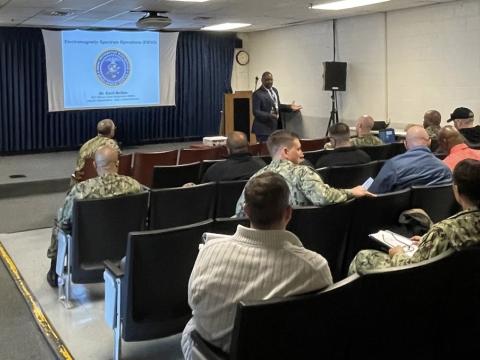Army CIO Implementing Many Changes
Priorites and acquistion methods are shifting for the U.S. Army chief information officer/G-6. Industry should be ready for new requests for proposal.
The U.S. Army has started to use the same faster-upgrades process introduced recently within its brigade combat teams for its information technology (IT) community. Just as Capability Sets 13 and 14 are providing quicker acquisitions for tactical units, the Army's chief information officer (CIO)/G-6 is creating capability sets for small, medium and large posts. The result should be a clearer process for introducing necessary improvements as well as making arguments for the required funds easier.
Michael Krieger, the deputy CIO/G-6 for the Army, explained the new plan as well as laid out the service branch's top five IT priorities at TechNet Land Forces South in Tampa, Florida. The first is IT management including refining governance. The priority also includes ensuring the roles and responsibilities for network architecture are correct. Second is a network capability portfolio review that will help leverage IT for various purposes. Third is continued data center consolidation. Soldiers are working to institutionalize management processes for this move to avoid redundant, unnecessary connections. Fourth is unified capability including an examination of how to stand up the capabilities regionally to support game-changing technologies. The fifth and final priority involves moving to more thin/zero client capabilities.
Krieger emphasized that cost benefit analyses comes first in all programs now with permission to acquire technologies following. For industry members to help, they need to comply with regulations, dialogue with the Army, use open systems and be good stewards of Army dollars. "There are lots of opportunities but we need to be tighter on following the rules," Krieger stated.
Another major priority for the Army is bring-your-own-device and mobility concerns. By working with the Defense Information Systems Agency (DISA), the service branch has adopted a more consistent policy on BlackBerrys that also enables more capabilities for the devices. A DISA/Army team is working on a request for proposal now to acquire a mobile device manager. Soon after, the team plans to release a request for proposal or broad agency announcement for mobile devices. Krieger said the request likely will start with Android and then later the military will look to adopt Windows and iOS systems.
Also in the works is a cost benefit analysis on alternatives for two-factor identity authentication. Krieger explained that several good technologies for that effort already exist in the commercial arena.




Comments